I am mastering pytorch here, and decided to implement very simple 1 to 1 linear regression, from height to weight.
Got dataset: https://www.kaggle.com/datasets/mustafaali96/weight-height but any other would do nicely.
Lets import libraries and information about females:
import torch
from torch.utils.data import Dataset
from torch.utils.data import DataLoader
import pandas as pd
import matplotlib.pyplot as plt
import numpy as np
df = pd.read_csv('weight-height.csv',sep=',')
#https://www.kaggle.com/datasets/mustafaali96/weight-height
height_f=df[df['Gender']=='Female']['Height'].to_numpy()
weight_f=df[df['Gender']=='Female']['Weight'].to_numpy()
plt.scatter(height_f, weight_f, c ="red",alpha=0.1)
plt.show()
Which gives nice scatter of measured females:

So far, so good.
Lets make Dataloader:
class Data(Dataset):
def __init__(self, X: np.ndarray, y: np.ndarray) -> None:
# need to convert float64 to float32 else
# will get the following error
# RuntimeError: expected scalar type Double but found Float
self.X = torch.from_numpy(X.reshape(-1, 1).astype(np.float32))
self.y = torch.from_numpy(y.reshape(-1, 1).astype(np.float32))
self.len = self.X.shape[0]
def __getitem__(self, index: int) -> tuple:
return self.X[index], self.y[index]
def __len__(self) -> int:
return self.len
traindata = Data(height_f, weight_f)
batch_size = 500
num_workers = 2
trainloader = DataLoader(traindata,
batch_size=batch_size,
shuffle=True,
num_workers=num_workers)
...linear regression model...
class linearRegression(torch.nn.Module):
def __init__(self, inputSize, outputSize):
super(linearRegression, self).__init__()
self.linear = torch.nn.Linear(inputSize, outputSize)
def forward(self, x):
out = self.linear(x)
return out
model = linearRegression(1, 1)
criterion = torch.nn.MSELoss()
optimizer = torch.optim.SGD(model.parameters(), lr=0.00001)
.. lets train it:
epochs=10
for epoch in range(epochs):
print(epoch)
for i, (inputs, labels) in enumerate(trainloader):
outputs=model(inputs)
loss = criterion(outputs, labels)
optimizer.zero_grad()
loss.backward()
optimizer.step()
gives 0,1,2,3,4,5,6,7,8,9 now lets see what our model gives:
range_height_f=torch.linspace(height_f.min(),height_f.max(),150)
plt.scatter(height_f, weight_f, c ="red",alpha=0.1)
pred=model(range_height_f.reshape(-1, 1))
plt.scatter(range_height_f, pred.detach().numpy(), c ="green",alpha=0.1)
Why does it do this? Why wrong slope? consistently wrong slope, I might add Whatever I change, optimizer, batch size, epochs, females to males.. it gives me this very wrong slope, and I really don't get - why?
Edit 1: Added loss, here is plot

Edit 2: Have decided to explore a bit, and made regression with skilearn:
from sklearn.model_selection import train_test_split
from sklearn.linear_model import LinearRegression
X_train, X_test, y_train, y_test = train_test_split(height_f, weight_f, test_size = 0.25)
regr = LinearRegression()
regr.fit(X_train.reshape(-1,1), y_train)
plt.scatter(height_f, weight_f, c ="red",alpha=0.1)
range_pred=regr.predict(range_height_f.reshape(-1, 1))
range_pred
plt.scatter(range_height_f, range_pred, c ="green",alpha=0.1)
which gives following regression, which looks nice:

t = torch.from_numpy(height_f.astype(np.float32))
p=regr.predict(t.reshape(-1,1))
p=torch.from_numpy(p).reshape(-1,1)
w= torch.from_numpy(weight_f.astype(np.float32)).reshape(-1,1)
print(criterion(p,w).item())
However in this case criterion=100.65161998527695
Pytorch in own turn converges to about 210
Edit 3 Changed optimisation to Adam from SGD:
#optimizer = torch.optim.SGD(model.parameters(), lr=0.00001)
optimizer = torch.optim.Adam(model.parameters(), lr=0.5)
lr is larger in this case, which yields interesting, but consistent result.
Here is loss:
 ,
And here is proposed regression:
,
And here is proposed regression:

And, here is log of loss criterion as well for Adam optimizer:






